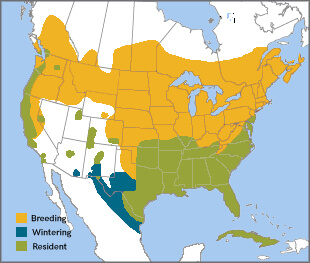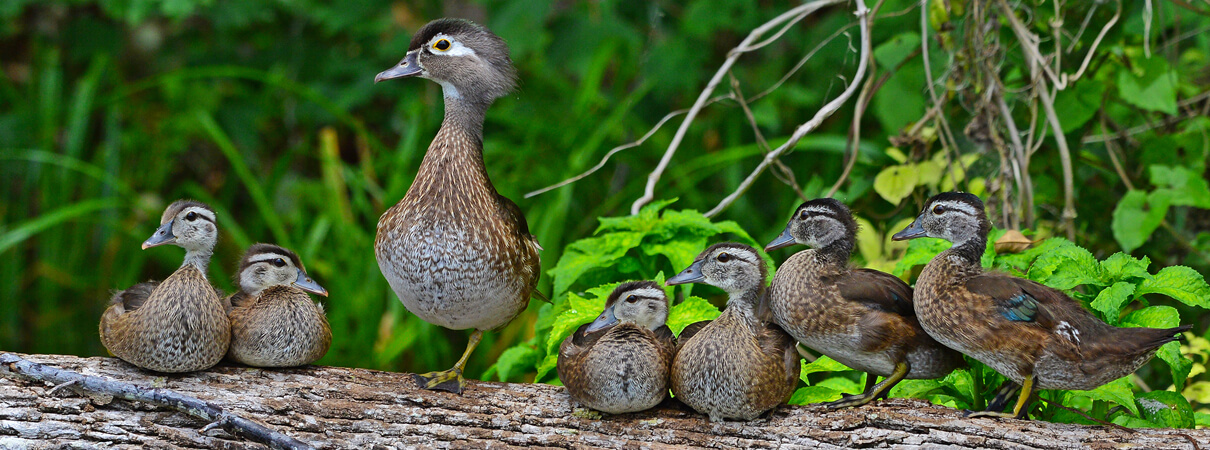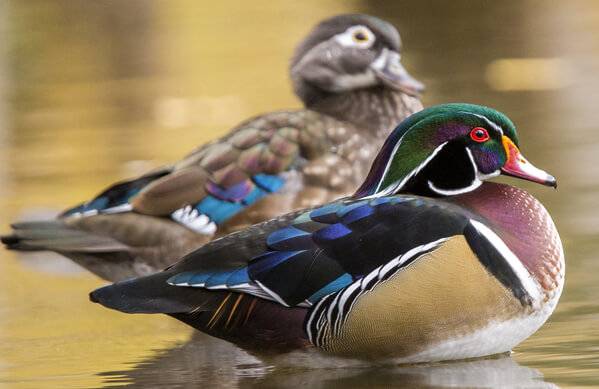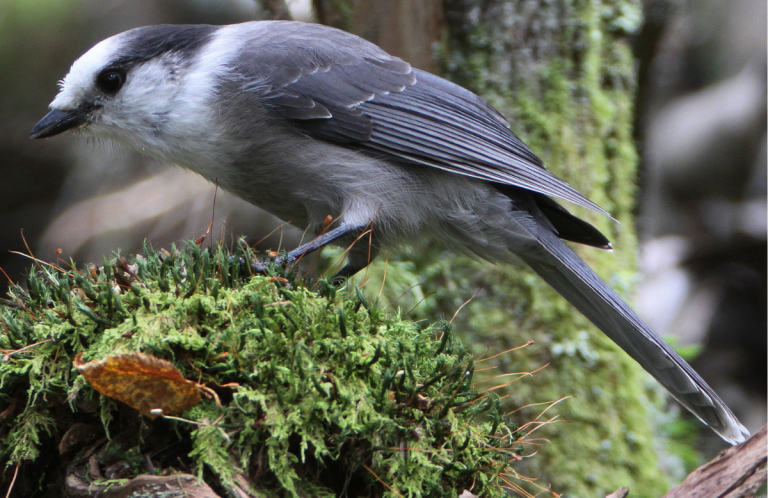 The colorful drake Wood Duck is one of North America's most beautiful waterfowl – an aquatic counterpart of the male Painted Bunting. This widespread, fast-flying denizen of swampy woods is also called the Carolina Duck, Swamp Duck, or Squealer Duck.
The colorful drake Wood Duck is one of North America's most beautiful waterfowl – an aquatic counterpart of the male Painted Bunting. This widespread, fast-flying denizen of swampy woods is also called the Carolina Duck, Swamp Duck, or Squealer Duck.
Today, the Wood Duck is often easy to find in suitable habitat within its range. Some might find it hard to believe that as recently as the early 20th century, this species seemed to be sliding toward extinction.
Conservation in the Nick of Time
The recovery of the Wood Duck is an inspiring conservation success story, as notable as the return of the Bald Eagle, Brown Pelican, and Osprey.
The drastic declines in Wood Duck populations noted by hunters and birders at the turn of the century were due to the wholesale destruction of bottomland hardwood forests, this duck's primary breeding and wintering habitat. Uncontrolled market hunting was another major contributor to the Wood Duck's close brush with extinction.
Fortunately, the enactment of the Migratory Bird Treaty Act in 1918 led to a moratorium on Wood Duck hunting across the United States. This prohibition lasted until 1940, after populations had rebounded to sustainable levels. The use of artificial nest boxes, started in the 1930s, also helped to boost Wood Duck numbers. Additional legislation, including the Pittman-Robertson Act (officially known as the Federal Aid in Wildlife Restoration Act of 1937) and, in 1989, the North American Wetlands Conservation Act, supported wetland and waterfowl conservation projects across the country, and helped turn around Wood Duck populations.
Tree Duck
Unlike most waterfowl, the Wood Duck is at home high in the trees. Its webbed feet are tipped with sharp claws that allow for easy perching, and its broad wings and tail allow it to easily navigate as it flies through dense, swampy woods. In flight, the drake Wood Duck gives a thin, high-pitched whistle, jeeeee. Female Wood Ducks make louder, squealing calls that sound like oo-week, oo-week. Wood Ducks have a number of other vocalizations used for keeping in contact, courtship, and nesting.
Listen below for a male Wood Duck flight call, followed by a female Wood Duck flight call:
(Audio of male Wood Duck flight call by Paul Marvin, XC453757, accessible at www.xeno-canto.org/453757; audio of female Wood Duck flight call by Paul Marvin, XC356416, accessible at www.xeno-canto.org/356416)
Nuts About Acorns
The Wood Duck is an omnivore, eating a variety of aquatic plants, nuts, and seeds, as well as aquatic insects, snails, tadpoles, and salamanders. Its narrow bill allows it to deftly pick up plants or prey from water, land, or vegetation; an expandable esophagus allows it to swallow multiple acorns, a favorite food. One Wood Duck's esophagus reportedly held 30 acorns!
Like the American Black Duck, Wood Ducks are "dabbling" ducks, so called for their method of surface feeding, in which they tip up their rear ends and dabble their feet while foraging with their heads below water. In deeper water, they may make shallow dives.
Courtship Interrupted
Wood Ducks begin courting and pairing up each fall and continue bonding through the winter. Courtship activity may cease during harsh weather, but resumes in spring, with breeding and nesting beginning around April.

Wood Duck and ducklings, Paul Winterman, Shutterstock
Like Hooded Mergansers, Wood Ducks nest in cavities. After a pair breeds, the hen chooses a nest site, usually in a tree cavity close to or over the water, often using an old woodpecker hole. The nest can be up to 50 feet above the ground. If they cannot find a suitable tree cavity, a pair will often use a nest box.
The hen pulls down feathers from her belly to line the nest, then lays an average of 12 eggs. Only about a day after hatching, young Wood Ducks leave the nest, jumping from the cavity rim to the ground or water below. The ducklings can tumble from heights of up to 100 feet without injury, but to play it safe, the parents try to nest over water, to ensure soft landings.
Continuing a Conservation Success
Although the Wood Duck has been saved from extinction, it continues to face threats from ongoing habitat loss. The conservation and management of wetland forest habitat are vital to maintaining healthy Wood Duck numbers, particularly in the wetlands and forests of the Lower Mississippi Valley, where a large percentage of the population spends the winter.
ABC is part of the Lower Mississippi Valley Joint Venture, which prioritizes the area's protection, restoration, and management. Its activities benefit many migratory bird species such as the Swallow-tailed Kite, Wood Thrush, and Prothonotary Warbler.
ABC also works with the Sustainable Forestry Initiative in the southeastern United States to preserve important habitat needed by the Wood Duck and many other birds.
The successful comeback of the Wood Duck can help serve as a template for the recovery of other North American bird species, particularly in light of a recently published report detailing the loss of more than a quarter of America's birdlife – nearly 3 billion birds – since 1970.
ABC has responded to this news with our 50-50-5 conservation plan, which includes a commitment to save 50 flagship bird species, protect and conserve 50 million acres, and fight five critical threats. You can help us implement this plan, or take other measures to help reverse this distressing decline. Find out more here.
Donate now to help reverse widespread bird population declines!



















































